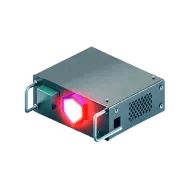In today’s fast-paced digital world, trust is the foundation of every business interaction. Whether you're signing contracts, processing transactions, or securing communications, the assurance that your data is safe and authentic is paramount. This trust is often anchored in encryption and digital signatures—mechanisms that are only as reliable as the cryptographic keys behind them.
But where do these keys come from? How are they generated, and more importantly, how securely are they stored? If the keys fall into the wrong hands, your digital identity can be impersonated, your assets stolen, and your critical data altered. The security of these keys is, therefore, of utmost importance.
This is where the Hardware Security Module (HSM) comes into play. HSMs ensure that your keys are generated, stored, and managed with the utmost security. They safeguard the integrity of your digital interactions and prevent unauthorized access to your cryptographic assets.
As organizations increasingly rely on encryption to protect their sensitive information, the need for robust key management has never been more critical. HSMs not only protect these keys but also streamline their lifecycle management, making them indispensable in today’s digital economy. But what exactly is an HSM, and how does it work? Let's explore the essential role of HSMs in safeguarding digital trust.
WHAT IS AN HSM?
A Hardware Security Module is a dedicated hardware device or appliance designed to securely generate, store and manage cryptographic keys and perform cryptographic operations such as encryption, decryption, digital signing, and authentication. HSMs are extensively used in industries that face increasing security threats and regulatory scrutiny, likefinance, healthcare, government, and cloud services. These devices are tested, validated, and certified to the highest security standards, including FIPS and Common Criteria.

General Purpose Hardware Security Module (HSM)
HOW DOES AN HSM WORK?
HSMs are hardened, tamper-resistant hardware devices that secure cryptographic processes by generating, protecting, and managing keys used for encrypting and decrypting data and creating digital signatures and certificates. They provide a high level of security for cryptographic keys, which is critical for maintaining secure systems.
HSMs manage all aspects of a cryptographic key's lifecycle, including:
- Provisioning: Keys are created by an HSM using a true random number generator.
- Backup and storage: Copies of keys are securely stored in the HSM, with private keys encrypted before storage.
- Deployment: Installing the key in a cryptographic device such as an HSM.
- Management: Keys are controlled and monitored based on industry standards and organizational policies, including key rotation.
- Archiving: Decommissioned keys are stored offline for potential future use.
- Disposal: Keys are securely and permanently destroyed when no longer needed.
WHAT ARE THE MOST IMPORTANT FEATURES OF AN HSM?
- Secure Design: HSMs use specially designed hardware adhering to government standards like FIPS 140-2 FIPS 140-3 and Common Criteria.
- Tamper Resistance: HSMs undergo hardening to resist tampering and damage.
- Secure Operating System: HSMs operate on a security-focused OS.
- Isolation: HSMs are physically secured in data centers to prevent unauthorized access.
- Access Control: HSMs control access and show signs of tampering; some become inoperable or delete keys if tampering is detected.
- APIs: HSMs support a wide range of APIs for application integration to ensure save communication between the application(s) and the HSM.
- Cryptographic Algorithms: Hardware Security Modules need to support a wide range of cryptographic algorithms. These include symmetric algorithms like AES, Camellia, and many more as well as asymmetric algorithms like RSA, ECC, the new PQC algorithms like ML-KEM, ML-DSA, SLH-DSA. In addition, advanced HSM also include key derivation algorithms like BIP 32 and hashing algorithms like SHA 3.
WHY USE AN HSM?
Any business that handles valuable or sensitive information should consider using a hardware security module. That type of information includes financial information, intellectual property, customer data, employee information and more. By using an HSM, you leverage several benefits, such as:
- Enhanced Security: HSMs provide higher security than software-based solutions by safeguarding cryptographic keys with stringent access controls.
- Compliance Requirements: HSMs help meet regulatory standards and compliance frameworks such as eIDAS, PCI DSS, HIPAA, and GDPR.
- Protection Against Key Theft: HSMs protect keys from exposure or theft, mitigating risks of unauthorized access and data breaches.
- Performance and Scalability: HSMs are optimized for cryptographic operations, offering high performance and scalability.
WHEN DO YOU USE AN HSM?
HSMs can be used with various applications that perform encryption or digital signing, including:
- Digital Signatures: Ensuring the authenticity and integrity of electronic documents and transactions.
- Blockchain: Protect the signing keys and consensus logic.
- Database Encryption: Secure key management for encrypting sensitive database data.
- Code Signing: Signing software code and firmware updates to ensure authenticity and integrity.
- Cloud: Control encryption keys consistently across multiple clouds while retaining full control.
- IoT: Establish unique identities to enable authentication and prevent counterfeiting of devices and applications.
- PKI (Public Key Infrastructure): Manage and protect root and intermediate certificate authority (CA) keys, supporting the issuance and management of digital certificates.
- SSL/TLS Offloading: Offloading encryption and decryption tasks to improve web application performance and security.
WHAT IS SECUROSYS CLOUDHSM OR HSM-AS-A-SERVICE?
HSM-as-a-service is a subscription-based offering where customers can use an HSM in the cloud to generate, access, and protect cryptographic key material separately from sensitive data. Securosys CloudHSM uses dedicated FIPS 140-2 Level 3 certified HSMs, offering the same features and functionality as on-premises HSMs, combined with the benefits of a cloud service deployment.
CONCLUSION
Hardware Security Modules play a crucial role in safeguarding cryptographic keys, securing sensitive data, and ensuring compliance with regulatory standards. By leveraging the advanced security features and capabilities of HSMs, organizations can enhance their data protection strategies and mitigate the risks associated with cyber threats and data breaches.
FAQs
Do your HSMs have a clustering function?
How many HSMs would you recommend for a best-practice setup?
Can the HSM be upgraded or scaled if my needs grow?
How do I integrate the Primus HSM with my existing applications?
Do you offer installation and integration support?
Does your HSM come with an SLA? If so, what is covered?
Does the Primus Cyber Vault support PQC?
Related Products
 HSM overview
Our Primus HSM guarantees secure generation, storage, and management of digital identities, encryption keys, and assets.
HSM overview
Our Primus HSM guarantees secure generation, storage, and management of digital identities, encryption keys, and assets.
 CloudHSM overview
CloudHSM provides a seamless, secure, and cost-effective path to achieving full compliance with data security requirements and regulations.
CloudHSM overview
CloudHSM provides a seamless, secure, and cost-effective path to achieving full compliance with data security requirements and regulations.
 Primus HSM X Series
Ideal hardware for advanced encryption standards and digital signatures
Primus HSM X Series
Ideal hardware for advanced encryption standards and digital signatures
 Primus HSM E Series
Economical Hardware Security Module in small 1-U form factor
Primus HSM E Series
Economical Hardware Security Module in small 1-U form factor










